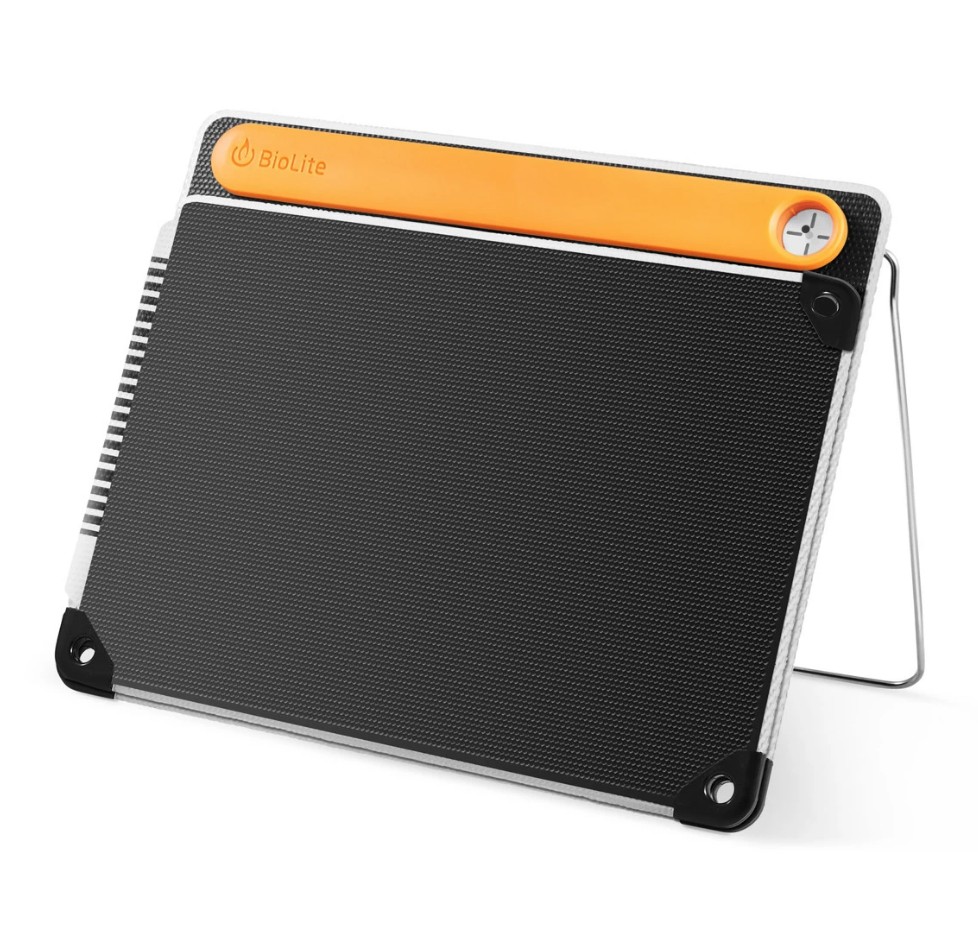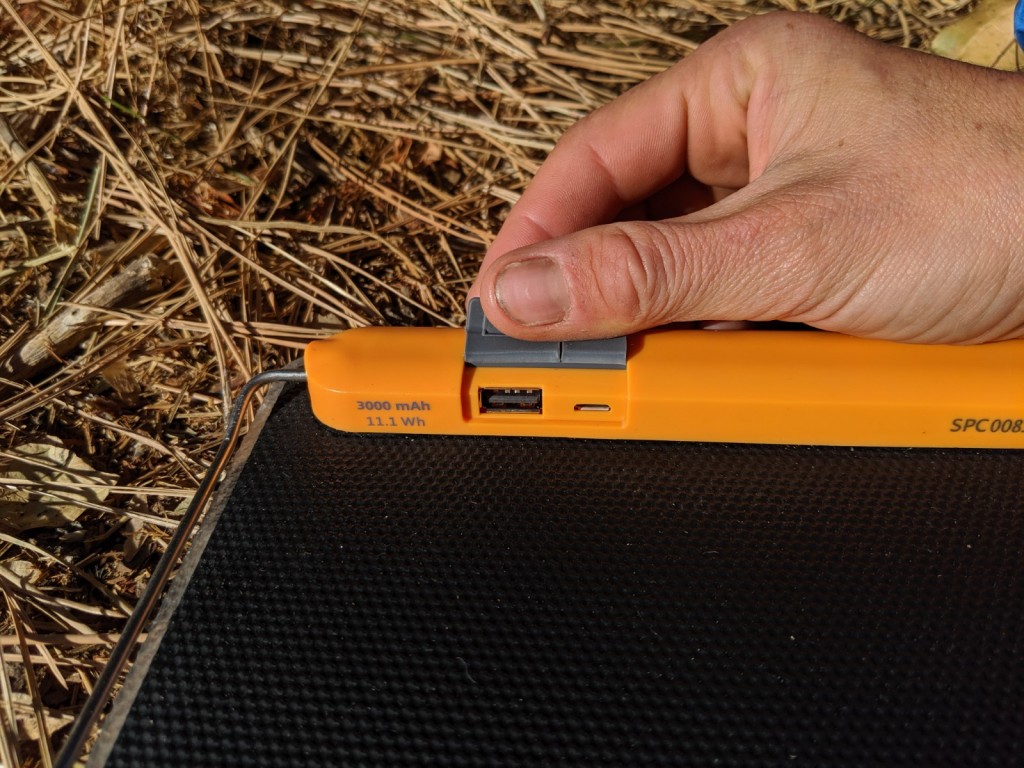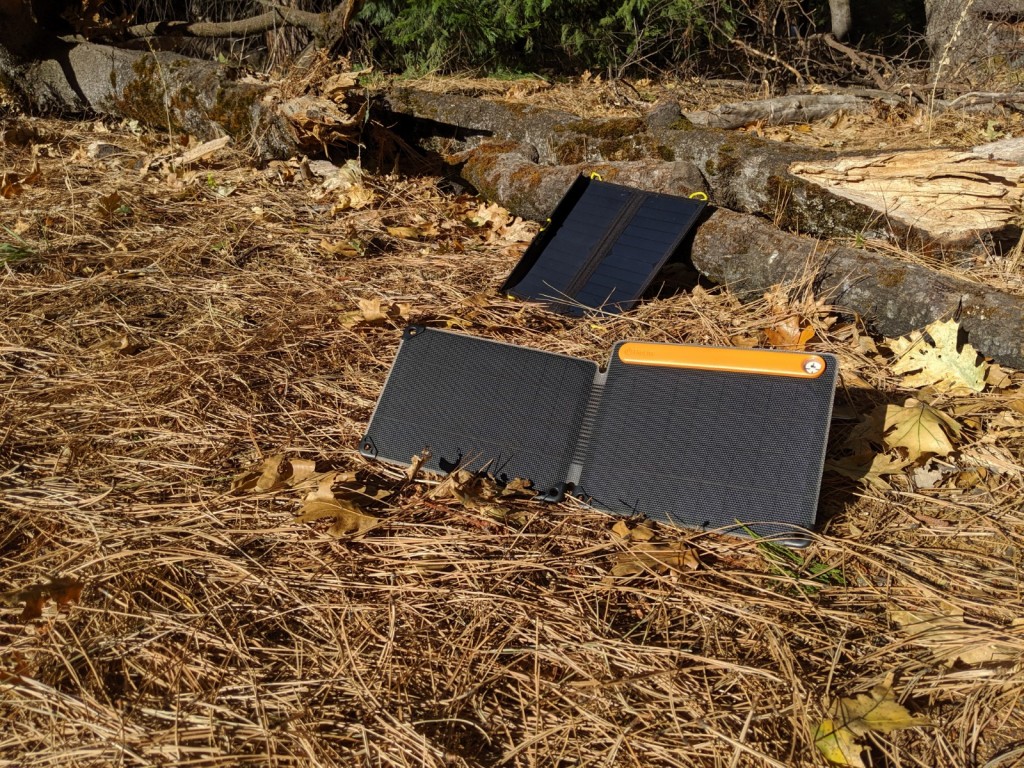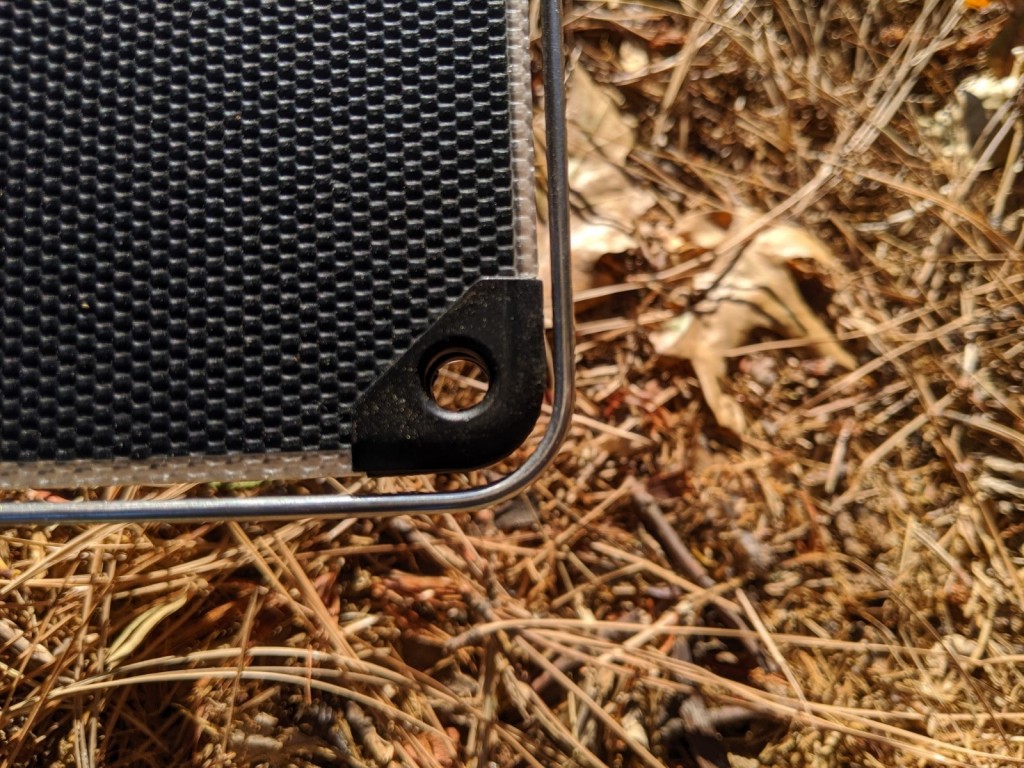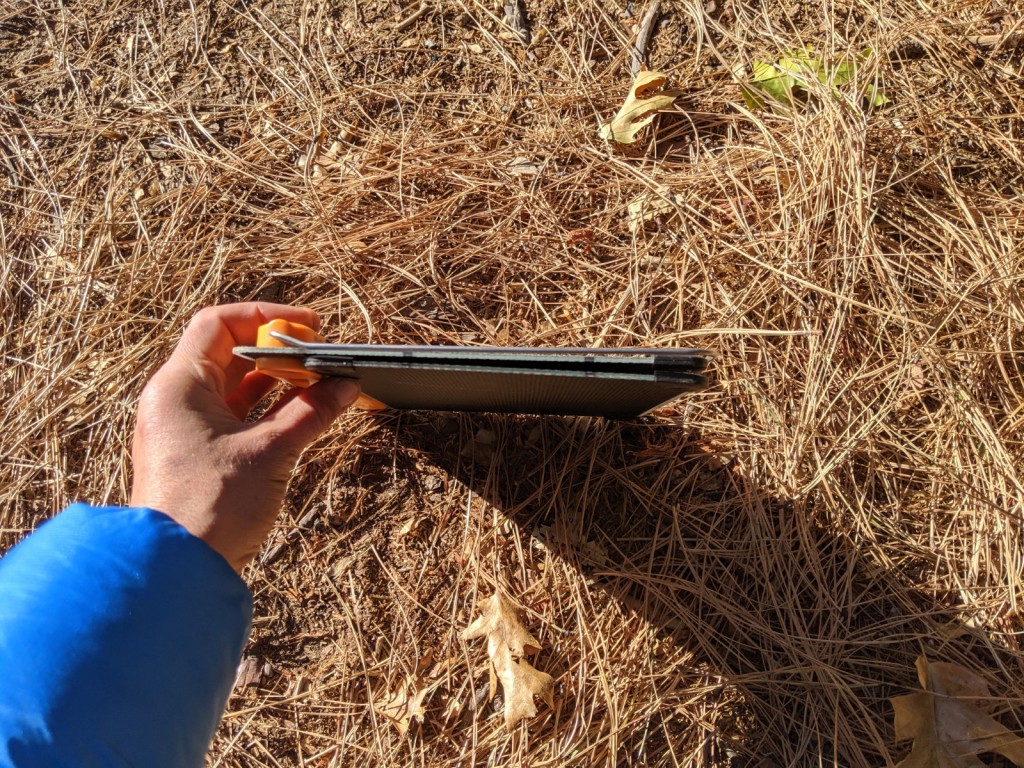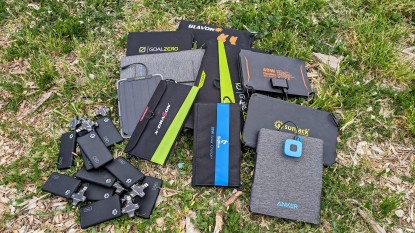Since our test period, BioLite updated the SolarPanel 10+ with a new battery with a 3,200mAh capacity.
BioLite SolarPanel 10+ Review
Our Verdict
Since our test period, BioLite updated the SolarPanel 10+ with a new battery with a 3,200mAh capacity.
Our Analysis and Test Results
From rapidly charging phones and battery packs to recovering a charge after shading, the BioLite performs impressively across the board.
Performance Comparison
Charge Interruption Recovery
This solar panel has an integrated battery pack, which helps significantly in shady or partly cloudy conditions.
The 3,000mAh battery is sleek and simple — we actually didn't even notice it when we first received the panel. It continues to deliver a charge to your device when the panel becomes shaded, which helps recover a charge since it doesn't have to reestablish a connection to the device. We appreciate this feature, as it makes a huge difference when it comes to charge interruption recovery.
During our testing period, we allowed the BioLite to sit in full sun for 30 minutes with an external battery plugged into it. We then recorded the amount of charge it delivered to the battery pack, which was 8%. Over the next 30-minute period, we intermittently shaded the panel to simulate partly cloudy conditions. The battery pack had been charging up in the previous half hour, so it was able to deliver power to our external battery, and at a fairly reasonable rate. The level of charge dipped down to 6% during that half hour period, but this is still far better than panels without a built-in battery pack.
Charging Speed
The BioLite has an LED battery indicator that has four lights, which show how much charge the integrated battery has. We set the panel out in full sun at half full (two out of the four lights were illuminated), and after a half-hour, the battery was at ¾ full.
Another half hour meant that the panel was fully charged, meaning that it took our BioLite two full hours of sun to fully charge its battery. This is relatively decent considering it can maintain a charge to an external device the whole time the panel is in the sun. In terms of phone charging speed, the BioLite charged our Pixel 3 to 21% over the course of 30 minutes, when placed in full sun. This is impressive and puts the BioLite on the upper end of the spectrum for this metric.
Multiple Device Charging Speed
The 10W BioLite panel has only one USB port, meaning that the panel is not able to charge more than one device at a time. This is fine, though, because typically, a panel of this size would not be able to successfully and simultaneously deliver charge to two devices.
Durability
The shining star of our testing period is certainly the BioLite. While some panels focused on rugged construction and durability seem to fall short in terms of overall performance and charging speed, the BioLite does not. This panel is built to last.
Upon first inspection, we noticed it's a robust panel, made to withstand the abuse that elements can throw at it. The cells are coated in a thick plastic protective layer that keeps off dirt and dust, and the USB port is protected by a silicone cap to keep dirt out. The weakest point on the panel is the kickstand, which consists of a piece of metal that sticks into a plastic sleeve. We saw no issues with the kickstand during our testing period.
The panel lacks a storage pocket, which is a downside in some ways but also makes it sleek and less prone to wear and tear since zippers and mesh are usually the first places to wear on most panels. Though this panel can heat up a fair bit when exposed to the sun for long periods, this was never an issue for us in terms of performance. The cells seem to be well made and able to resist the heat that occurs after long periods in the sun. These features make the BioLite our obvious choice for our Top Pick for Durable Performance.
Weight and Portability
The BioLite 10 lands in the middle of the pack in our metric comparisons. With a measured weight of 19.2 ounces, this panel is not as heavy as some but is not the lightest in the bunch. Its design impressed us; it's sleek and portable, with no extra bells or whistles, and feels like a clipboard or small notebook when slid into a backpack.
It is one of the thinnest panels we've reviewed, and the integrated battery is especially low profile. Though it doesn't have the lowest weight, we felt that this extra weight translated to added durability - a trade-off that we appreciate. For long ventures into the backcountry, an additional 19 ounces can feel like a lot, but the BioLite can slide easily into the back panel of a backpack, or into an external pocket, where its presence is hardly noticed.
Value
With a relatively high price tag, the BioLite 10 is a bit of an investment. For a fairly low capacity panel, it costs a pretty penny. That said, it is durable, reliable, and decently efficient, making it a good choice if you're willing to throw down for it. It should also be mentioned that BioLite has a warranty program if something happens to stop functioning on your panel. This is a bonus since many of the panels we reviewed are imported, meaning it can be reasonably challenging to contact the manufacturer and return faulty products. This is always something to be wary of when purchasing solar panels online - customer reviews are full of horror stories about ill-functioning panels and manufacturers who are impossible to contact.
Conclusion
The BioLite 10+ is a durable, well-made panel that charges devices quickly and effectively. It especially shines when it comes to charge interruption recovery since it has a built-in 3,000mAh battery, which regulates the amount of charge delivered to the devices. This is a unique feature that many of the other panels in this review do not have. If you are willing to pay for it, the BioLite is a reliable and efficient panel.


